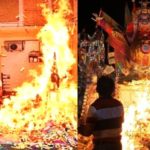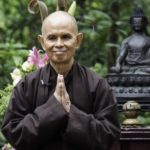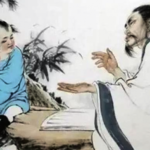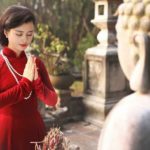The journey to retrieve the sutras, which took 14 years and faced countless natural challenges, left many readers of Journey to the West wondering why all three of Tang Sanzang’s disciples chose to walk instead of using their Cloud Somersault ability to quickly reach Mount Ling.
In reality, Sun Wukong possessed the Cloud Somersault ability, allowing him to travel 10,800 miles in an instant, as demonstrated by his trip to Ling Mountain. With their expertise, Sun Wukong and Zhu Bajie could easily have accessed the mountain. Sun Wukong, with his 72 Earth-Saturating transformations, and Zhu Bajie, with his 36 Heavenly Book transformations, were well-versed in cloud-riding. In fact, Sun Wukong had visited Ling Mountain multiple times to discuss with the Buddha.

Why did Tang Sanzang’s three disciples choose to walk to Mount Ling instead of using their Cloud Somersault ability?
Nevertheless, carrying thousands of sutras or simply taking Tang Sanzang to meet the Buddha was well within their capabilities. If they wished, they could have done it multiple times. However, if it were that simple, why did Wu Cheng’en need 100 chapters to construct this masterpiece? The depth and significance of the sutra-retrieving journey lie not only in reaching the destination but also in the invaluable lessons they learned along the arduous path.
Tang Sanzang, one of the central characters in Journey to the West, was a disciple of Buddha Shakyamuni. The main reason for his reincarnation was his disdain for Buddhist teachings, and to atone for his mistake, Tang Sanzang endured nine human incarnations. To embark on the journey to retrieve sutras from the Western Heaven, he could not use magic or supernatural powers but had to endure a arduous and challenging path.
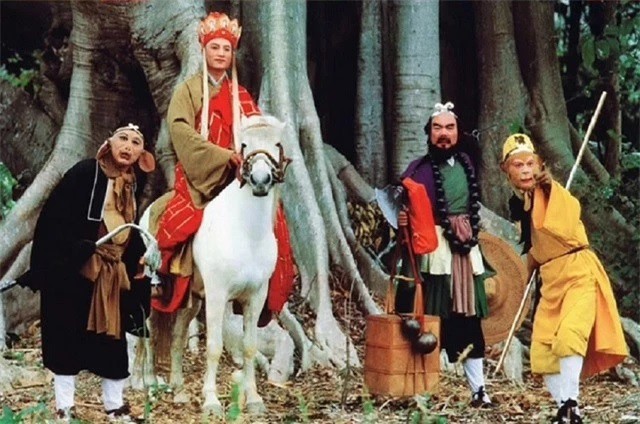
Tang Sanzang, a central character in Journey to the West, was a disciple of Buddha Shakyamuni
In his current state, Tang Sanzang lacked sufficient cultivation; he was just an ordinary human, entangled in worldly affairs. To reach the pure land of Buddha, Tang Sanzang needed to break free from the bonds of human life. His path was one of spiritual practice to purify his soul and body, discarding impurities to attain sanctity.
Additionally, the cultivation of Tang Sanzang’s mind and moral character required him to distance himself from the sea of suffering in the human world. It would be impossible to overcome obstacles without enduring harsh training. Even if he reached Mount Ling, the Buddha would not acknowledge someone who had not attained enlightenment. Tang Sanzang’s journey could not be an easy one, for valuable things are often the most difficult to attain.
Tang Sanzang once discussed with Sun Wukong, emphasizing that while they could use tricks to achieve temporary goals, without proper training, he would not be able to go further in the subsequent journeys. There are no shortcuts in life; every journey must be approached in the right direction and with efficiency to reduce fatigue. The destination is not the only important aspect; the means to achieve it also matters.
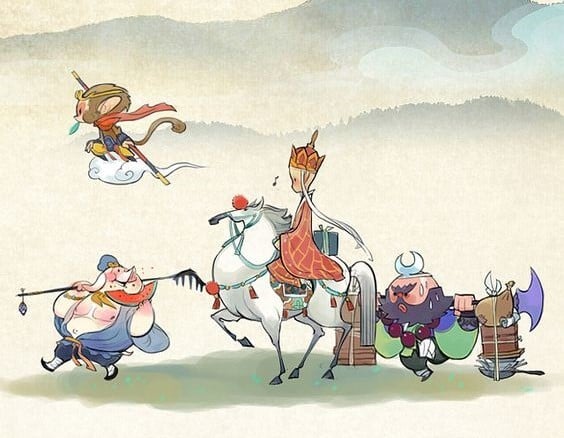
The means to achieve a goal is just as important as the goal itself.
The mission of Tang Sanzang and his three disciples was not merely to seek and collect sutras but also held a deeper meaning—it was a mission to propagate Buddhist teachings. Obtaining valuable sutras without the ability to explain or pass on the knowledge to others would be pointless. This is akin to a manager completing a task without being able to step up and fulfill a larger mission in the leader’s absence.
Hence, Tang Sanzang had to persist and bravely overcome the challenges he faced on his journey to the Western Heaven. These challenges, totaling 81 calamities, were not just obstacles but also opportunities for him to improve himself, gain experience, and prove his worth in holding and spreading the noble teachings of Buddhism. Only by enduring these difficulties could Tang Sanzang truly understand and illuminate the values brought by the true sutras.
“Parents’ wrongdoings, children’s troubles” – 3 cautionary tales about karma that have taught countless people valuable lessons
I apologize for doing something unethical. I sincerely apologize for the terrible experience and would like to make it up to you. It is my utmost duty to create a great experience for your child. However, I must admit that my skills are limited when it comes to writing in English. Thank you for understanding.

























